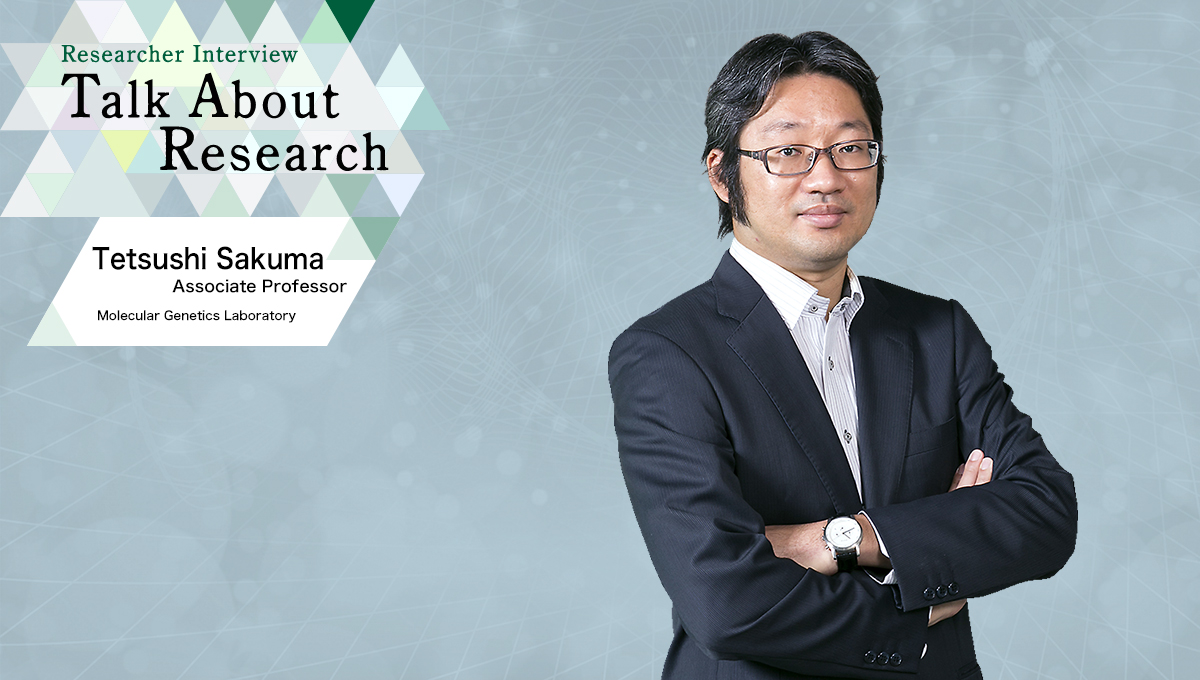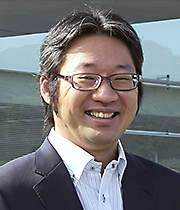Making attention-grabbing genome editing tools easier to use and more efficient
Still fresh in our memory is the awarding of the 2020 Nobel Prize for Chemistry to Dr. Emmanuelle Charpentier and Dr. Jennifer Doudna, who developed the third-generation genome editing technology “CRISPR-Cas9.” The news of their winning the Nobel Prize for Chemistry proved how valuable the development of “genome editing technology” could be, and Dr. Sakuma, a researcher in the same field, was also very happy to hear that news.
“Genome editing” is a technique of making an alteration to the genomic DNA, the blueprint of life, by utilizing an enzyme corresponding to scissors cutting the DNA. For example, the genomic DNA in humans contains vast amounts of information (some 3 billion letters) and it has been almost impossible to pinpoint the genetic code to alter certain information. Dr. Sakuma says, “Genome editing has enabled such information alteration and caused a paradigm shift across all areas of life science, including basic biology, medicine, dentistry, pharmacy, agriculture, fisheries, and animal husbandry. If the blueprint of life can be altered, the nature of living organisms can be changed, and so this technology has unlimited potential for a variety of applications depending on the ideas.”
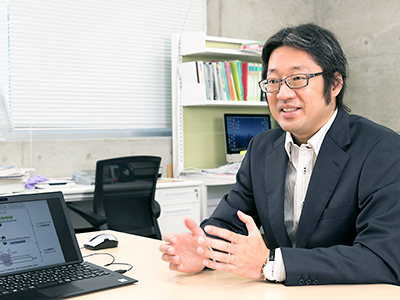
Dr. Sakuma explains the history of genome editing technology development as follows: The basic concept of genome editing was first discovered in around 1990. Then, the first-generation genome editing tool “Zinc Finger Nuclease (ZFN)” was developed in 1996, and the second-generation editing tool “TALEN” was released around 2010. The abovementioned “CRISPR-Cas9” was developed in 2012. The first two tools are called synthetic enzymes and their DNA scissors are made from proteins not found in nature, whereas CRISPR-Cas9 is made of protein and nucleic acids that exist in nature. CRISPR-Cas9, making use of the working of nature to cut the target site, is a very innovative, easy-to-use, and highly efficient tool.
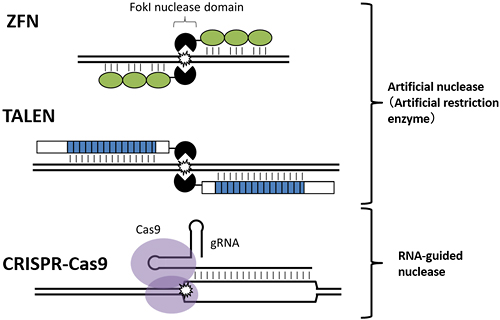 Fig 1: Three kinds of genome editing tools
Fig 1: Three kinds of genome editing tools
Dr. Sakuma launched the present research project when he entered the doctoral course in 2010. He has belonged to the Molecular Genetics Laboratory organized by Professor Takashi Yamamoto since then. The Laboratory is widely known as one of the top laboratories leading the development of genome editing technology in Japan.
Dr. Sakuma’s research group actively promotes collaborative research with Japanese and overseas researchers, and has presented research outcomes in steady succession. According to the ranking of researchers who have published the most papers on genome editing technology presented in the scientific journal Nature Biotechnology (October 2019), Dr. Sakuma and Professor Yamamoto are fifth and second in the world, respectively.
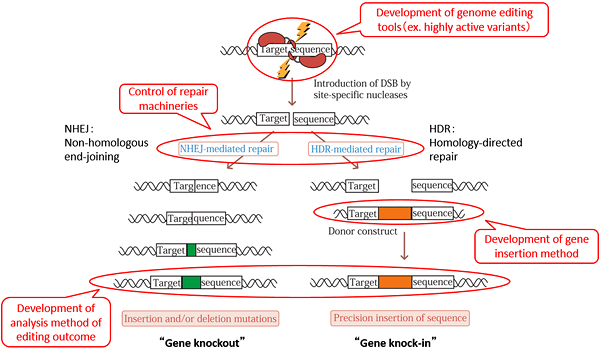 Fig 2: Mechanism and technology development of genetic engineering using genome editing
Fig 2: Mechanism and technology development of genetic engineering using genome editing
Aiming at developing versatile technology rather than unique technology
The following are some examples of the research outcomes he presented (time of publication in parentheses):
- Succeeded in developing the high-efficiency genome editing tool “Platinum TALEN” and its production system (November 2013)
- Developed the easy-to-use gene insertion method “PITCh system” using genome editing technology (November 2014)
- Modified genome editing technology; successfully developing new technology called the “LoAD system” designed to increase the probability of achieving genetic modification as intended (August 2018)
- Developed the new technology “TREE system” for high gene activation by applying genome editing technology (October 2018)
Dr. Sakuma developed and published “Platinum TALEN” as a lead author, and the “PITCh system,” the “LoAD system,” and the “TREE system” as one of the corresponding authors. The “LoAD system” and the “TREE system,” his latest research accomplishments, are summarized as follows:
■What is the LoAD system?
By modifying “CRISPR-Cas9,” in which a protein called “Cas9” forms a complex with sgRNA (single-guide RNA) to recognize and cut the target DNA sequence, the LoAD system markedly improves the efficiency of knock-in for inserting the target gene into the target genome site. At the same time, Dr. Sakuma and his colleagues succeeded in knocking-in different fluorescent reporter genes in three gene loci. Successful knock-in of several genes without selective pressure is the world’s first report of CRISPR-Cas9 modification study results.
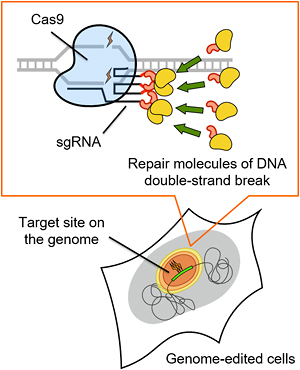 Fig 3: Schematic of LoAD system
Fig 3: Schematic of LoAD system
■What is the TREE system?
The TREE system uses “CRISPR-Cas9” modified to maintain DNA recognition activity and inactivate DNA cutting action. The TREE system enables a high accumulation of activation proteins around the target gene without cutting or modifying the DNA sequence, which helps achieve a greater activating effect than conventional technology. Dr. Sakuma and his colleagues succeeded in enhancing the activity of tumor suppressor genes in pancreatic cancer cells to a level about 30-fold higher than that achieved with conventional technology. The TREE system is expected to be applied to safer cancer treatment.
 Fig 4: Schematic of conventional 1st- and 2nd-generation gene activation systems and TREE system
Fig 4: Schematic of conventional 1st- and 2nd-generation gene activation systems and TREE system
The research objectives of Dr. Sakuma are to develop technologies by making technology easier to use and broadening the scope of technology, and to promote their application. Dr. Sakuma says, “When sophisticated technology is developed and if it can only be used for limited purposes and requires a high level of skill like craftsmanship, it will not be widely used in the long run. My motto is to develop a truly ‘usable’ technology, and I have developed manageable technologies based on my principles, which have contributed to numerous collaborative research activities.” In short, his research is motivated by the desire to “develop versatile technology rather than to produce unique technology.”
For that reason, materials related to technologies developed by his research group have been distributed globally for free academic use through Addgene, an NPO corporation in the United States. In 2016, Dr. Sakuma shared the Blue Flame Award with Professor Yamamoto for their material distribution, and besides his research results, his devotion to the spread of genome editing technology is highly appreciated.
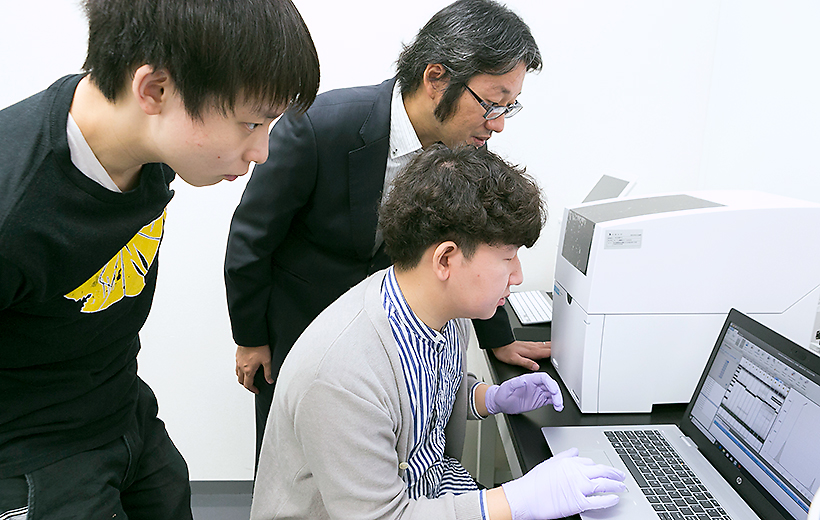
Interest in spreading technologies developed by Dr. Sakuma;
the real pleasure of cutting-edge research
We asked Dr. Sakuma about his excitement at being engaged in highly influential genome editing technology research. “It is very inspiring to advance research and development projects on the front line,” said Dr. Sakuma. However, he also pointed out various aspects of the research. “I am deeply impressed by the development of technology making a significant breakthrough that I have never thought about, and we were disappointed with the news that an overseas research group had gotten a step ahead of us in reporting the technology being developed by us,” said Dr. Sakuma. He also commented, “Genome editing technology is advancing at an astonishing rate, and new technologies, uses and applications are being reported from all over the world at an unprecedented speed in the history of life science; this trend has not lost its momentum and is still continuing.” “We always need to keep our eye on the latest trend and advance research,” said Dr. Sakuma, expressing his determination.
Despite all these difficulties, Dr. Sakuma continues his research because he finds it interesting to know that “technologies he developed are being applied to various fields and widely used.”
“Platinum TALEN” is applied to a great variety of biological species, including human cells, mice, rats, pigs, marmosets, frogs, newts, tuna, killifish, zebrafish, sea urchins, ascidians, silkworms, and nematodes, as well as plants, microalgae, and microorganisms such as aspergilli. The technology is also used in various fields, ranging from basic biology research in fields such as cell biology and developmental biology to the manufacture of therapeutic cells, to the improvement of agricultural, marine and livestock products, and the production of materials such as biofuels. It is the highest honor for me as a researcher to truly understand that my technology is widely spread through collaborative researches with researchers from different fields.
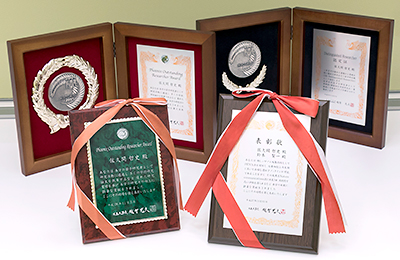
He also emphasized the need for “a sense of proportion” when conducting research.
“It is important to maintain a balance between our basic technology development and application development in collaborative research, between aggressive and steady research, and between researches of higher academic and industrial value,” Dr. Sakuma said. “Resources are limited and the proportion of human, financial and temporal resources depends on the researcher’s sense and skills.” In addition to educational and societal activities, he has recently experienced a sudden increase in non-research activities, including entrance examination operations, tasks as a university committee member, and outreach activities, facing a decreasing trend in the number of papers published.
“I will not change my stance on the contribution of the limited resources of one researcher to the maximum academic and social benefits,” said Dr. Sakuma. “I will work hard together with overseas developers and continue my research and development.”
One of his future goals is to “apply his research outcomes to actual medical practice and industry.”
“At present, technology application is still in the research and development phase, and I hope that therapeutic cells undergoing genome editing based on our technology will be used in actual medical practice, and that truly safe and valuable genome-edited food products that have been properly evaluated for safety and accepted by society will be marketed in the near future. I also serve as a science and technology adviser to PtBio Inc. established by Professor Yamamoto, CTO, and want to be actively involved in developing mediation between academia and industry.
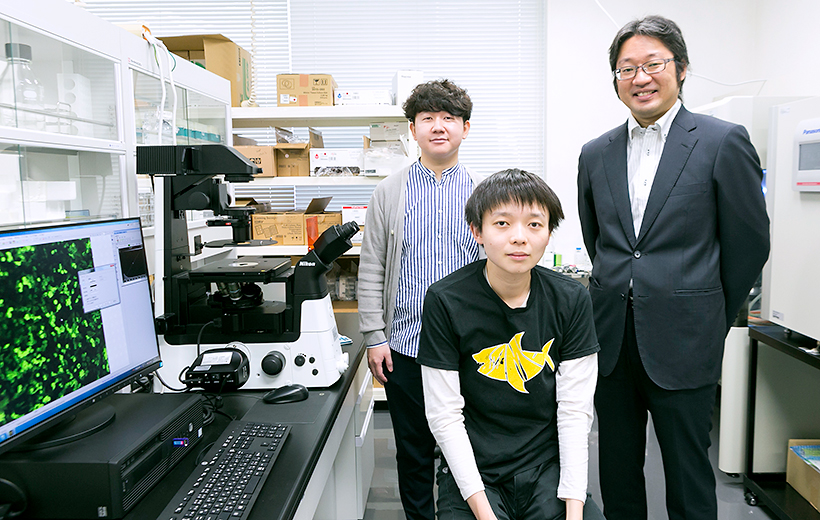 Opened on March 17, 2021
Opened on March 17, 2021

